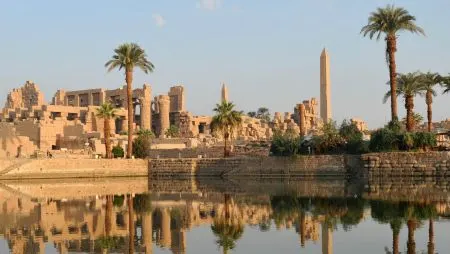If you are a fan of ancient Egyptian architecture and history, then you must visit Hatshepsut Temple. This temple is one of the most well-preserved temples in Egypt, and it is located on the west bank of the Nile River across from the city of Luxor. In this article, we will take you on a journey through Hatshepsut Temple, unveiling its secrets and exploring its main features. We will also provide you with tips for visiting this hidden gem and share some interesting facts about it.
Introduction to Hatshepsut Temple
Hatshepsut Temple is a mortuary temple dedicated to the queen-pharaoh Hatshepsut, who ruled Egypt during the 18th dynasty. The temple was built in the 15th century BC and it was designed by the architect Senenmut. The temple is also known as Djeser-Djeseru, which means "the most sacred of sacred places."
The temple is located in a valley surrounded by towering cliffs, which adds to its beauty and uniqueness. It consists of three terraces that rise up to a height of 97 feet. The terraces are connected by ramps and courtyards, and they are decorated with reliefs depicting the queen's achievements and the gods who protected her.
History of Hatshepsut Temple
Hatshepsut Temple was built during the New Kingdom period of ancient Egypt, which lasted from 1550 BC to 1070 BC. Hatshepsut ruled Egypt from 1478 BC to 1458 BC, and she was one of the most successful pharaohs of her time. She was known for her military campaigns, her building projects, and her trade expeditions to the Land of Punt.
Hatshepsut's temple was built to commemorate her reign and her achievements. It was also built to serve as her final resting place, as she was buried in a tomb located beneath the temple.
Architecture and Design of Hatshepsut Temple
Hatshepsut Temple is a marvel of ancient Egyptian architecture and design. It is built in a symmetrical style, with each terrace having a central axis that leads to the next terrace. The temple is also built in a way that takes advantage of the natural landscape, as it is nestled between cliffs and it blends in with the surroundings.
The temple is made of limestone, which was quarried from the nearby hills. The limestone was then transported to the temple site and carved into the shapes needed for the temple's columns, walls, and statues. The temple is decorated with reliefs depicting the queen's achievements, the gods who protected her, and scenes from her trade expeditions to the Land of Punt.
The Mysteries of Hatshepsut Temple
Hatshepsut Temple is full of mysteries and secrets that have fascinated archaeologists and historians for centuries. One of the biggest mysteries of the temple is the identity of Hatshepsut's architect, Senenmut. Some scholars believe that he was Hatshepsut's lover, while others believe that he was her chief advisor.
Another mystery of the temple is the purpose of the three terraces. Some scholars believe that they represent the three levels of the afterlife, while others believe that they represent the three stages of Hatshepsut's life.
Exploring the Main Features of Hatshepsut Temple
The temple has several main features that are worth exploring. The first feature is the colonnaded courtyard, which is located at the entrance of the temple. The courtyard is lined with 16 columns that are decorated with reliefs of the queen and the gods. The courtyard also has a statue of Hatshepsut, which was destroyed by her successor, Thutmose III.
The second feature of the temple is the hypostyle hall, which is located on the second terrace. The hall has 32 columns that support the roof, and it is decorated with reliefs depicting the queen's achievements and the gods who protected her.
The third feature of the temple is the sanctuary, which is located on the third terrace. The sanctuary is the most sacred part of the temple, and it is where the statue of the queen would have been kept. The sanctuary is also decorated with reliefs depicting the queen's achievements and the gods who protected her.
Tips for Visiting Hatshepsut Temple
If you are planning to visit Hatshepsut Temple, there are a few things you should keep in mind. First, make sure to wear comfortable shoes, as there is a lot of walking involved. Second, bring plenty of water and sunscreen, as the temple can get hot and sunny. Third, consider hiring a guide, as they can provide you with more information about the temple and its history.
Interesting Facts About Hatshepsut Temple
Here are some interesting facts about Hatshepsut Temple:
- The temple was rediscovered in the 19th century by the French archaeologist Jean-Francois Champollion.
- The temple was damaged by an earthquake in 27 BC and it was later restored by the Romans.
- The temple was used as a Coptic Christian monastery in the 7th century AD.
- The temple was used as a backdrop for several Hollywood movies, including "The Mummy Returns" and "Transformers: Revenge of the Fallen."
Hatshepsut Queen
Hatshepsut, also called Maatkare, was one of the three female pharaohs that ruled in ancient Egypt. Her name means "foremost of noblewomen." She began her reign as a regent to his stepson Thutmose III then took the full power of the Pharaoh as she claimed to be divine birth, the result of a union between her mother and the god Amun. She also claimed that ThutmoseI had named her as his successor before his death. Being the second historically-confirmed female Pharaoh, Hatshepsut was the fifth Pharaoh of the Eighteenth Dynasty of Egypt. Hatshepsut came to the throne of Egypt in 1478 BC. She was the daughter of King Thutmose I and became the queen of Egypt when she married half-brother, Thutmose II, around the age of 12. After his death, she became regent for her stepson, the infant Thutmose III, but then she had the full powers of a pharaoh, becoming co-ruler of Egypt.
Her Major accomplishments
Hatshepsut undertook hundreds of ambitious construction projects throughout both Upper Egypt and Lower Egypt. She built her mortuary temple in a complex at Deir el-Bahri, which considered one of the architectural wonders of ancient Egypt, on the West Bank of the Nile River in the ancient Thebes near the entrance of the Valley of the Kings. It was designed and implemented by Senenmut, her chief minister. Another one of her magnificent building is the Hatshepsut needle. Another great achievement of her reign was re-establishing the trade networks that had been disrupted during the Hyksos, and the trading expedition she sent, and that brought back vast riches, including ivory, ebony, gold, and leopard skins, to Egypt from a distant land known as Punt.
Why queen Hatshepsut was being unknown at first?
Queen Hatshepsut ordered to be depicted as a male in many contemporary images and sculptures. Thus, she remained unknown to scholars until the 19th century. Another reason is that Thutmose III had eradicated almost all of the evidence of Hatshepsut's rule–including the images of her as king on the temples and monuments she had built. Consequently, she remained unknown to scholars until they decoded and read the hieroglyphics on the walls of Deir el-Bahri in 1822.
The discovery of Her Mummy
In 1903, the British archeologist Howard Carter discovered Hatshepsut's sarcophagus, but it was empty, like most of the tombs in the Valley of the Kings. In June 2007, there was a discovery of a mummy in the tomb of Hatshepsut's royal nurse, Setre-In. A tooth fragment founded in a jar of organs led to identifying the body to be Hatshepsut's.
When and how did Hatshepsut die?
Hatshepsut died, in the twenty-second year of her reign, on January 16, 1458 BC, as recorded on a single stela erected at Armant. The cause of her death was a matter of speculation; some think that her stepson Thutmose III might have killed her because he erased all signs of her rule. Assuming the identification of her mummy is correct, another cause could be shown; those who examined the mummy concluded that it is most likely that the metastasized cancer killed her. The mummy shows signs of arthritis, many dental cavities and root inflammation and pockets, diabetes, and bone cancer.
Another theory derives from the dental root inflammation and pockets assumed an abscess, which in her weakened condition from cancer, was what killed her. In 2011, researchers in Germany identified a carcinogenic substance in a vial founded with Hatshepsut, which led to the notion that she may have used a lotion or cream for cosmetic reasons or to treat a skin condition that led to cancer.
Conclusion: Why Hatshepsut Temple is a Must-Visit Destination in Luxor!
Hatshepsut Temple is a must-visit destination in Luxor for anyone who is interested in ancient Egyptian history and architecture. The temple is a marvel of design and engineering, and it is full of mysteries and secrets that have fascinated scholars for centuries. If you are planning a trip to Egypt, make sure to include Hatshepsut Temple in your itinerary. You won't be disappointed!
Queen Hatshepsut was a great pharaoh, Explore her heritage through one of our Egypt vacations and Nile Cruises vacations!
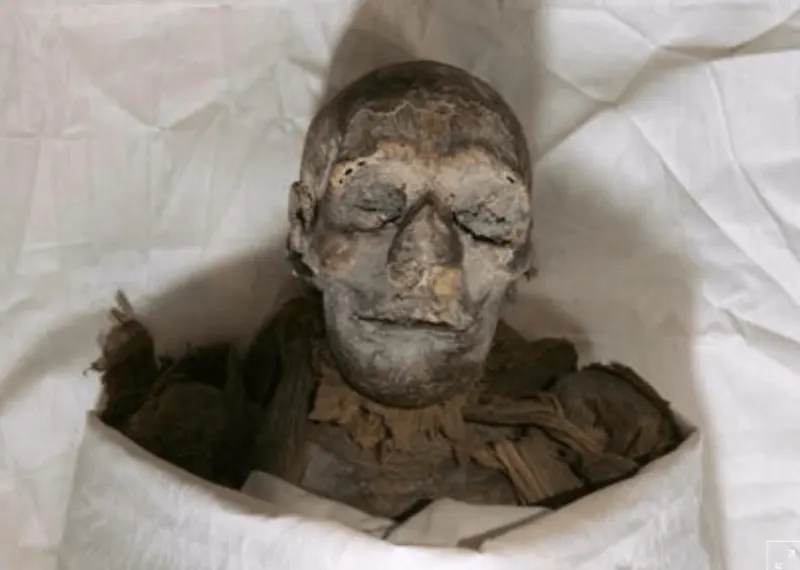
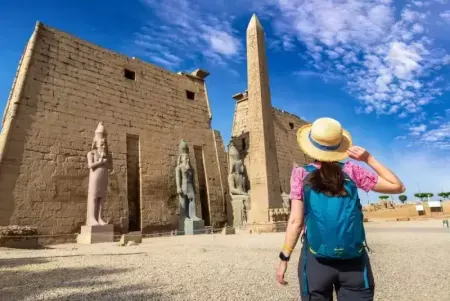
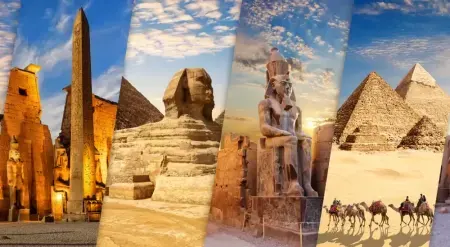

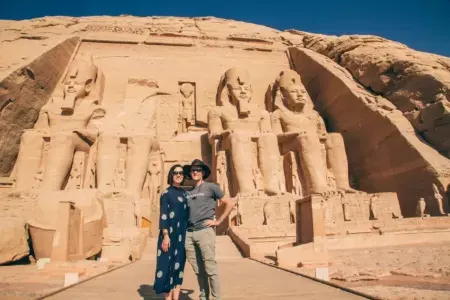
.webp)
.jpg)






.jpg)

